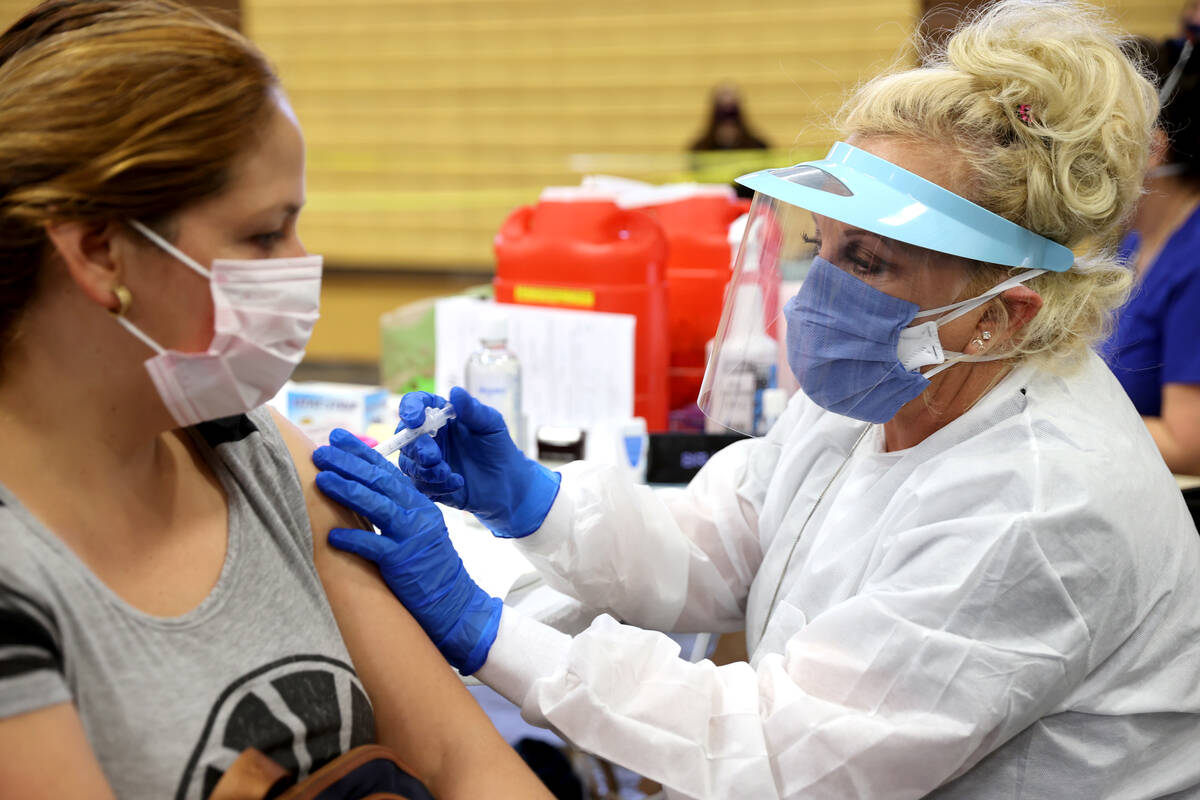‘Twindemic’ ahead? Concern growing over possible flu, COVID confluence
The U.S. is on track for a more typical flu season this winter, creating the potential for a “twindemic” of coinciding flu and COVID-19 surges that could overwhelm hospital emergency rooms, health officials say.
After last year’s remarkably mild flu season, attributed to pandemic restrictions that impeded the spread of influenza, increasing cases across the country indicate we won’t get another pass this year.
“It’s still early days, but we appear to be on track for at least a moderate influenza season this year,” Dr. William Schaffner, an infectious disease professor at Vanderbilt University, said on Wednesday.
The most recent data from the Centers for Disease Control and Prevention shows high flu activity in seven states: New Mexico, Kansas, North Dakota, Tennessee, Indiana, Georgia and New Jersey, as well as very high activity in the District of Columbia. The data shows minimal or low activity so far in the western states, with Nevada in the latter category.
The Walgreens Flu Index, which shows levels of flu based on retail prescription data for anti-viral medication used to treat the flu, also shows low influenza activity in the state.
That’s not atypical, Schaffner noted, saying, “Influenza doesn’t strike the entire country simultaneously.”
The CDC, which in the past week reported the first two flu deaths in children this season, said flu activity is increasing across the country, especially in the eastern and central parts of the U.S.
In Nevada, there have been no reported deaths from flu so far this season, state health officials said. As of Dec. 11, the most recent data available, there had been 22 hospitalizations in Nevada from the flu and 558 emergency room visits.
The last flu season was mild around the globe, including in Clark County, where six flu deaths and 50 hospitalizations were reported. In contrast, 59 deaths and 1,481 hospitalizations were reported in the county the prior season, according to the Southern Nevada Health District.
Spikes expected in the new year
Schaffner expects to see cases of both COVID-19 and of flu increase as we enter the new year.
“I would anticipate that all of this holiday traveling that we have done not only is a wonderful Mixmaster for COVID and its spread but also for other respiratory viruses, such as influenza,” he said.
The flu season in Nevada typically doesn’t reach its peak until February, said Brian Labus, an assistant professor of epidemiology and biostatistics at the UNLV School of Public Health.
“February is when we get slammed really hard with influenza,” Labus said. “And that’s when we start to see the long delays in emergency rooms and those staff members being overwhelmed.”
Especially concerning to health officials is the prospect of simultaneous surges of COVID-19 and the flu.
“What we hope is that it’s not a surge of both because that would create a ‘twindemic,’ so-called, that would hit the health care system with both influenza and with COVID simultaneously,” Schaffner said.
“That we don’t need, so we have our fingers crossed,” he said. “I just hope that they don’t conspire to do it simultaneously in too many places.”
Hospital emergency rooms are strained most seasons by high volumes of flu cases.
“I worry about the flu every single year in terms of the stress it puts on our health care system,” Labus said. “But to put these two things on top of each other, it could be the thing that finally breaks it.”
The omicron variant, a highly contagious strain of the coronavirus, already is driving up COVID-19 case numbers to near record levels, though cases generally are milder and don’t require hospitalization. However, if there are concurrent spikes of both omicron and flu, “We are not going to be able to handle the number of patients in our emergency rooms,” Labus said.
Hospital emergency rooms already are very busy, which is common around the holidays, said Dr. Dominic Martinello, chief medical officer for MountainView Hospital in the northwest Las Vegas Valley. Some health care providers close their offices for the holiday, and holiday eating can exacerbate certain chronic conditions such as diabetes, sending more people to the ER.
“Then with the advent of omicron, we’re seeing a lot more patients in the ER right now than prior,” he said. “We’re also starting to see a little bit of an influenza uptick.” Most of these patients have not needed to be admitted, he said.
But he worries that hospitals could begin to see patients who have concurrent cases of COVID-19 and the flu.
“If you add a secondary respiratory disease on top of an existing respiratory disease, that’s honestly a big concern as far as ICUs go, because that could be a catastrophic type of infection,” he said. “We worry about that minority of patients who are unvaccinated against either disease and susceptible to both of them.
“And there could be a large enough number of those that it could really strain the health care system of the valley.”
‘Vaccine fatigue’
According to the CDC, there are early signs that fewer people are getting vaccinated against the flu this season than last.
“This year it’s lagging, which doesn’t surprise me, because there’s real vaccine fatigue out there,” Schaffner said. “People are so concerned about COVID they haven’t had a chance to think about flu.”
So far this season, 18 percent of children and adults in Nevadans have received a flu shot compared with the national rate of nearly 48 percent, according to officials with the Nevada Department of Health and Human Services.
An annual flu shot is recommended for those 6 months and older, especially for the elderly, those with underlying illnesses such as diabetes and pregnant women, all of whom are at higher risk for complications from flu, Schaffner said.
The shot appears to be well matched to neutralize the (A)H3N2 flu viruses that currently are circulating, according to the CDC. Not all who get a shot will avoid contracting influenza, but the cases in vaccinated people typically are milder.
Now is a good time to get vaccinated, officials said, before the flu season gets into full swing.
“We are starting to observe nationally the flu pop out of its foxhole,” said Cassius Lockett, director of disease surveillance and control with the Southern Nevada Health District. “Right now is a critical time for all residents to remain vigilant.”
Contact Mary Hynes at mhynes@reviewjournal.com or 702-383-0336. Follow @MaryHynes1 on Twitter.
Where to get a flu shot
The Southern Nevada Health District offers flu shots at its public health centers. Walk-in clients are accepted at the Health District's 280 S. Decatur Blvd. immunization clinic. Appointments are required at its other centers. To make an appointment, call 702-759-0850. Flu vaccines can be administered at the same time as COVID-19 vaccines or other immunizations. Flu shots also are widely available at pharmacies.











































